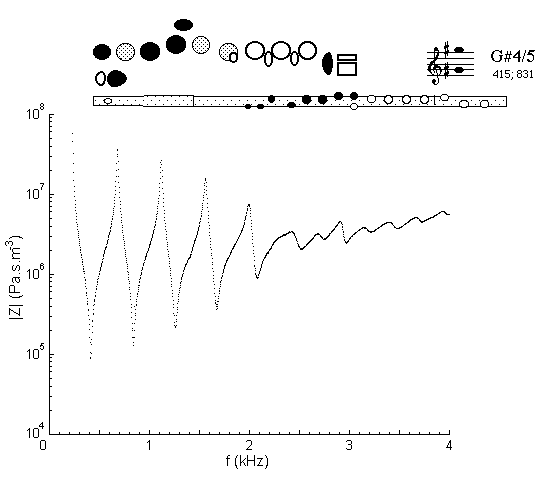| Acoustics of baroque, classical and modern flutes |
modern flute
|
G#4 |

|
Fingering Acoustic schematic Non-specialist introduction
to acoustic impedance |
The flutist uses the same fingering for G#4 and G#5, but changes the speed, length and shape of the jet. The first four minima can be played. These first five mimima support harmonics in G#4. In G#5, only the second and fourth minima are important. The acoustic diagram shows that there are two equivalent tone holes which, in principle, could each make the G-G# transition. Boehm's original key system ("open G#") did not have this inelegance, but he introduced this variation ("closed G#") because flutists were used to opening a hole with their LH fourth fingers. The two holes are rarely open at the same time.
| Acoustic measurements are available for these flutes - modern B, modern C, classical C, classical D, classical flared, baroque Sound clips are available for modern B, classical flared and baroque |
To compare flutes, it is easiest to open a separate browser window for each instrument. |